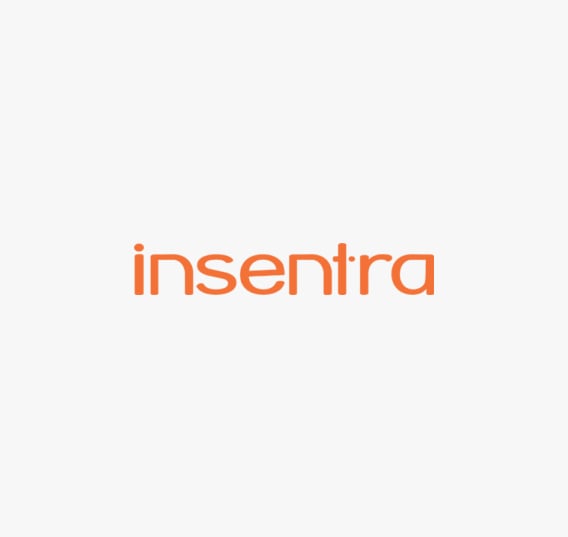One of the reasons I joined FSLogix was because of their roadmap, so I’m very excited to be here while we launch what I think is one of the most useful products I’ve ever seen: Cloud Cache. For FSLogix, Cloud Cache is the result of thousands of development hours building, from the ground up, a technology that satisfies our customers’ requests while at the same time adding unprecedented new features and immediate value for any company that’s using Windows desktops today.
But enough about that…what’s Cloud Cache?
Put simply, Cloud Cache enables you to store your Office 365 and Profile Containers anywhere, on-premises or in the cloud. You might think that we’ve shown you cloud support before, and we have, but this is different. Prior to Cloud Cache, if you wanted to store your Office 365 and Profile Containers on cloud storage, you needed to jump through some hoops to create SMB file shares, and though it was effective, it also proved to be costly.
Cloud Cache leverages native cloud storage, most notably Azure Page Blobs for now, which saves you money and lets you more efficiently use cloud resources. In an environment like the cloud, where storage charges are based 1/3 on capacity and 2/3 on activity, optimisation is critical, and our local cache will cache reads and optimise writes, saving you real money. This could be extremely beneficial for Citrix XenDesktop and XenApp Essentials customers looking to provide the most complete desktop experience.
By adding a local cache to the virtual desktop, Cloud Cache prevents applications from making the same request to the container over and over again. This serves a few purposes:
1. Once the file is cached locally, end user performance is 100% native
2. Resource consumption on the file server and network is drastically reduced
3. If used with the cloud, costs due to activity charges are significantly lowered
Perhaps most importantly, though, the local cache serves as a buffer between your applications and the storage. If, for example, your storage controller fails over from one resource to another, your applications won’t know about it. OneDrive is perhaps the best example. When its connection to the storage is interrupted, even briefly, it will stop working, forcing a user to restart the app or log off and back on. Cloud Cache eliminates this downtime because OneDrive is talking to the local cache instead of directly to the storage, and is none the wiser when the storage cuts over.
These new features, storage continuity, increased performance, and cloud costs optimisation are important to all our customers, so we’re including them with Profile Container and Office 365 Container. Customers with subscriptions or active maintenance will receive these features for no additional fee!
But there’s more…way more!
In the early stages of developing Cloud Cache, it became apparent that what we were doing for a single location could also be done for multiple locations—at the same time! This will be an add-on module for Profile Container and Office 365 Container, and it’s the most exciting thing we’ve done yet.
Here’s how it works: Instead of a single storage location, you configure Cloud Cache with multiple locations, on-premises or in the cloud, in any combination. Cloud cache takes care of the rest, making sure every location is in sync with the others. Configuration is done in via the registry, where you specify the type of storage (SMB, Azure, etc…) and the path to that storage. The first entry is the primary, the next is the secondary, and so on. Cloud Cache will only read from the primary location, but it will write to all locations so everything is the same.
The beauty of Cloud Cache is that if the primary storage location goes down, it will automatically switch to the secondary location, and because the apps are operating out of the local cache, nothing ever changed from their perspective. When the primary location comes back up, Cloud Cache will ensure it is re-synchronized.
We built Cloud Cache around this idea, and we think we’ve created something that’s groundbreaking that enables a number of use cases that were too expensive or impractical before now.
Use cases
Here are a few of the use cases we think this will help with, and we’re sure the community can come up with new ways to use this that we haven’t even thought of yet.
Enhanced Storage Continuity
The local cache itself helps maintain application performance and functionality through brief interruptions, but multi-location capabilities of Cloud Cache mean that you can put your end users’ data in any location, anywhere. You’ll no longer be dependent on the failover capabilities of the storage hardware, which means you, the desktop administrator, can put control of storage continuity in your own hands.
You can, for example, have two SMB fileservers on-premises, each with a copy of the VHD, as well as another in the cloud, that way if something happens to the local storage network, users can still access their data out of the cloud. When the original location comes back online, Cloud Cache will switch back to using it. This way, your end users will always receive the best profile performance possible in a given situation.
VHD Backups
One issue with placing all your user profile data in VHD containers is that when the user is logged in, the containers are locked. This prevents backing up the profiles or Office 365 data, but with Cloud Cache, you can simply add another location to serve as the backup.
Profile Storage Migrations
Migrating your profile file share can be a pain if done via traditional means, but with Cloud Cache you can simply configure a secondary storage location and wait for the data to replicate. When it’s complete, you can turn off the original location and Cloud Cache will continue connecting the user to their data as if nothing changed.
Globally-redundant Disaster Recovery
Now things are really getting interesting! Since Cloud Cache can save to multiple locations, on-premises or in the cloud, you can adopt a new disaster recovery strategy. You can store VHDs in the local datacenter, at a hot site, and in any cloud…even different clouds at the same time. That means that you can distribute your data as much as you need to in order to assure 100% failover and availability in the event of a disaster.
And, because your data can be on-premises and in the cloud, that opens up a number of other use cases, too…
Cloud Desktops
Call them what you want, DaaS, Cloud-hosted desktops and applications, or managed services, desktops and applications running in the cloud has never been more popular. 76% of VDI Like A Pro’s State of the Industry survey respondents said they are interested in placing desktop and application workloads in the cloud, and FSLogix Cloud Cache can help.
As adoption increases, migrations to DaaS will become a hot button item. How, exactly, do you get your user data from on-premises to the cloud? Do you replicate it from the local datacenter? Do you have your DaaS users traverse a VPN back to the local file storage for all their data, or do you move all the data and make any local users traverse the VPN to get their data from the cloud? With Cloud Cache, you can configure two (or more) locations while your desktops are still on-premises, and when you’re ready to move your users, the data will be there waiting for them.
This also enables hybrid DaaS or DaaS as a disaster recovery, where a user accesses both local and cloud-based desktops (or desktops that live in different clouds). Cloud Cache can be configured to place the data anywhere desktops reside, so your users’ profile and Office 365 data will always be local to any desktop they use.
Finally, Cloud Cache gives you the ability to back up user profiles and Office 365 data that resides at DaaS providers. If all of your desktops are in the cloud, but you still want to have a backup of the user data, you can install Cloud Cache on the remote desktops and configure another storage location that’s not on the same cloud as the desktops. That way, should something go awry with the cloud provider, even if they have their own backups, you can be sure you always have a copy as well.
What’s available now?
Currently, Cloud Cache is available as part of a limited Tech Preview program. If you want to try it out, head over to our Tech Preview registration page and fill out the form. We’re qualifying candidates to make sure we get a quality representative base as we gear up for the actual release.
There are a few limitations to the Tech Preview:
* It will only support SMB storage. Azure support will come later, followed by other services (AWS, Google Cloud, SFTP, etc…) based on customer feedback.
* For XenApp environments provisioned with PVS, we recommend only testing a single user. As it stands, the size of the local cache is not configurable, so you’ll fill up your PVS write cache with too much profile/Office 365 data. We’ll fix this by the time it’s released, but we wanted to get it into your hands sooner than we could finish that feature.
We expect General Availability with SMB support by the end of May, with Azure support coming after that. We’ve worked closely with Microsoft throughout this process, so we’ll be ready to rock with all the latest features Azure Storage can provide as soon as we can.
If you’re already an FSLogix customer, reach out to your partner, sales person, or SE to get a closer look. If not, we sure hope you give us a try. We think you’ll be impressed.











